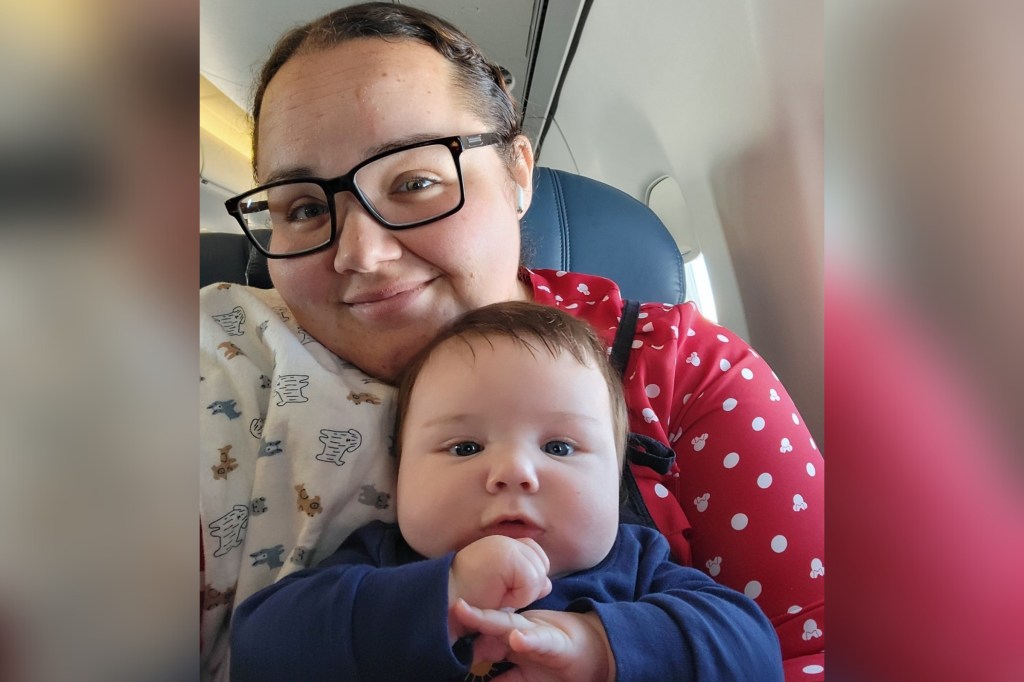Growing up Veronica McDougall thought everyone saw the world the way she did; blurry, slightly out-of-focus and with tunnel vision. As she got older her sight got worse and even the strongest prescription glasses didn’t help. When she was 15 her brother tried teaching her to drive. One night she got into the driver’s seat to practice and told him she couldn’t see anything. Everything was just black. After that she stopped driving.
Veronica says high school was really hard for her, but she managed to graduate and go to community college. As her vision deteriorated, she found it was increasingly hard to read the course work and impossible to see the assignments on the blackboard. Veronica says she was lucky to have some really supportive teachers — including the now First Lady Jill Biden — but eventually she had to drop out.
Getting a diagnosis
When she was 24, she went to see a specialist who told her she had retinitis pigmentosa, a rare degenerative condition that would eventually leave her legally blind. She says it felt like a death sentence. “All of my dreams of becoming a nurse, of getting married, of having children, of traveling – it all just shattered in that moment.”
Veronica says she went from being a happy, positive person to an angry depressed one. She woke up each morning terrified, wondering, “Is this the day I go blind?”
Then her mother learned about a CIRM-funded clinical trial with a company called jCyte. Veronica applied to be part of it, was accepted and was given an injection of stem cells in her left eye. She says over the course of a few weeks, her vision steadily improved.
“About a month after treatment, I was riding in the car with my mom and suddenly, I realized I could see her out of the corner of my eye while looking straight ahead. That had never, ever happened to me before. Because, I had been losing my peripheral vision at a young age without realizing that until up to that point, I had never had that experience.”
A second chance at life
She went back to college, threw herself into her studies, started hiking and being more active. She says it was as if she was reborn. But in her senior year, just as she was getting close to finishing her degree, her vision began to deteriorate again. Fortunately, she was able to take part in a second clinical trial, and this time her vision came back stronger than ever.
“I’m so grateful to the researchers who gave me my sight back with the treatment they have worked their entire lives to develop. I am forever grateful for the two opportunities to even receive these two injections and to be a part of an amazing experience to see again. I feel so blessed! Thank you for giving me my life back.”
And in getting her life back, Veronica had a chance to give life. When she was at college she met and starting dating Robert, the man who was to become her partner. They now have a little boy, Elliott.
As for the future, Veronica hopes to get a second stem cell therapy to improve her vision even further. Veronica’s two treatments were in her left eye. She is hoping that the Food and Drug Administration will one day soon approve jCyte’s therapy, so that she can get the treatment in her right eye. Then, she says, she’ll be able to see the world as the rest of us can.
CIRM has invested more than $150 million in programs targeting vision loss, including four clinical trials for retinitis pigmentosa

To regain one’s vision…what an incredible gift– to the individual, and to the world.
please keep me posted, I live in South Africa. gene CNGA-1
My Daughter which is only33 has had Retinitis Pigmentosa since she was 22 has lost all peripheral vision, night vision and is losing the distance of judgement now. I will be so happy when the FDA approves jCyte’s therapy. This totally breaks a mother’s heart! I will never give up hope and praying one day she will see again. Daphne Pike from Alabama
Wonderful. Do you have more informations about this patient because I wanna talk with her about the treatment ?
I hope the treatment will be available before 2025.
Please guide your n further treatment options for Rp and relevant tests and age for enrolling in the clinical trials
Pingback: The Most Read Stem Cellar Blog Posts of 2022 | The Stem Cellar